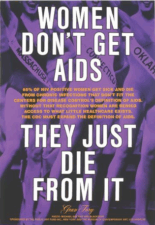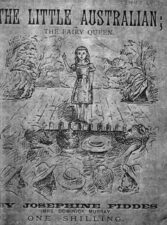 Well deserved, but badly neglected. Women’s absence from the Blue Plaques that adorn buildings and, at times, road or pathways, is again being questioned. Some women, such as Julie Harper, are choosing their own method of giving women of note publicity. Others, such as Helen Casey, are seeking women’s names to become part of the Blue Plaque scheme. Zoe Craig is writing about women’s absence from the scheme. Elizabeth Jane Warr has written a book enumerating the Oxford Blue Plaque recipients. Some of these are women.
Well deserved, but badly neglected. Women’s absence from the Blue Plaques that adorn buildings and, at times, road or pathways, is again being questioned. Some women, such as Julie Harper, are choosing their own method of giving women of note publicity. Others, such as Helen Casey, are seeking women’s names to become part of the Blue Plaque scheme. Zoe Craig is writing about women’s absence from the scheme. Elizabeth Jane Warr has written a book enumerating the Oxford Blue Plaque recipients. Some of these are women.
In 2013 Julie Harper wrote ‘Mapping Famous Women’s Lives: Writers and Artists in London for the WHN blog http://womenshistorynetwork.org/blog/?p=2371.
On March 1st 2016, Helen Casey sought women’s names for Blue Plaques to honour women for an ITV Heritage series to be posted on their website. The article about women and Blue Plaques found that only 13% of those in London were dedicated to women. It’s the 150th year of the blue plaque scheme and English Heritage is calling for more female nominations.[1]
In The Oxford Plaque Guide [2]by Elizabeth Jean Warr again only a few Blue Plaques remind us of women who have made history.
Of them, some are known as part of a partnership, for example Jane Burden (1839-1914), married to William Morris. Refreshingly, her Blue Plaque refers to her unmarried name in far larger letters than her married name which appears beneath. She is referred to as a ‘Pre-Raphaelite Muse and Embroiderer’. [3] Martha Combe 1806-1893) does not fare so well: she is listed below her husband, together with him as a founder of St Barnabas Church in Jericho on which the plaque is placed, and, again with him, as a philanthropist and patron of the Pre-Raphaelite Movement. Clara Plater 1841-1910) does somewhat better – although her name is placed below her husband’s name, she is given independence as a ‘Pioneer of Women’s Education’.[4] As Warr notes, she was also ‘an early professional woman in the field of classics’ and the ‘first Classics tutor at the newly founded Somerville College in 1879’.[5]
Women who appear alone on the plaques are: Sarah Jane Cooper, Dorothy C. Hodgkin, Dorothy L. Sayers and Felicia Skene.
Sarah Jane Cooper (1848-1932) was a marmalade maker and grocer. Remarkably the plaque remembers her in this capacity, as the marmalade she concocted, put into jars and then sold in her husband’s shop was entirely her family recipe and her idea. It was sold under her husband’s name. [6]
Dorothy C. Hodgkin (1910-1994) was a chemist – the first British woman scientist to be awarded with the Nobel Prize for Science in 1964. Her life reads as a lengthy list of accomplishments in chemistry, academic achievement, archaeology, and as an advocate for peace as well as having a family. [7]
Dorothy L. Sayers (1893-1957) was an author, scholar and theologian. Known for her detective novels featuring Lord Peter Wimsey, she also wrote plays, short stories poetry, reviews, essays and translations. She studied at Oxford, taught in Hull, was publishing assistant to Basil Blackwell, a copy writer for a large advertising agency and an enthusiastic motor cyclist. [8]
Felicia Skene (1821- 1899) was a writer and prison reformer. Her plaque acknowledges her as a prison reformer and friend of the poor. She was an inveterate organiser of nursing facilities to deal with small pox and cholera. Farr reflects that she was a ‘compassionate and kindly woman’. [9]
Another woman with links to Oxford and who at the end of her life lived in Finstock, a village in the area, remembered through a Blue Plaque is the writer, Barbara Pym (1913-1980). She was a prolific writer. Although only six novels were published, together with a book of novellas, short stories and commentary, the Bodleian Library houses a wealth of unpublished short stories, commentaries, poetry and drafts of published and unpublished works.
[1] Zoe Craig, History, News and Politics, 1 March 2016.
[2] Elizabeth Jean Warr (2011) The Oxford Plaque Guide The History press
[3] P. 30
[4] Pp. 96-97
[5] P. 97
[6] Pp.42-43
[7] Pp.60-62
[8] Pp.113-114
[9] P.118


